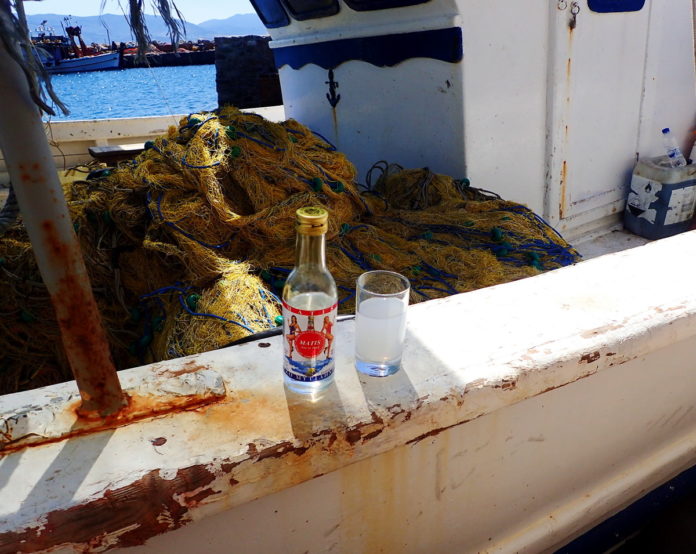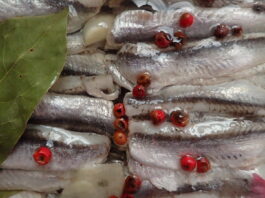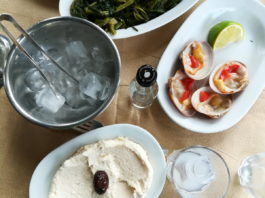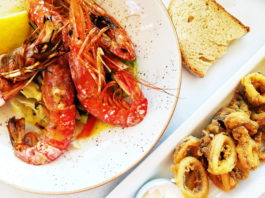Greece’s drinking culture is as refined as it is ancient. The indigenous Greek drinks – tsipouro, ouzo, and tsicoudia – have special status in Greek culture, with customs and social rituals attached.
Two of the traditional Greek drinks – tsipouro and tsikoudia (“raki”) – thrive in small-scale production, bringing people closer to the land and to their neighbors with the ritual distilling parties – “Kazani” in the case of tsipouro, and “Kazanemata” in the case of Crete’s raki.
Traditional Greek alcoholic drinks are never consumed alone. First, they’re enjoyed with meze – small dishes and piquant bites meant to temper the effects of the alcohol and, more importantly, keep people at the table together longer. That brings us to the second, and much more central, point – Greeks always drink with good company and conversation.
Greeks drink with such enviable Mediterranean style and finesse – elevate your lifestyle by emulating the refined drinking practices of Greece.
Table of Contents
Ouzo

In Greece, you’ll sometimes hear it called “ouzaki” – the affectionate diminutive that captures the spirit’s special place in the collective Greek soul
Ouzo is the distillation of the romance of a Greek summer, synonymous with tavernas by the seaside, octopus hanging from a line to dry.
It’s not a lie. Ouzo really is a beloved drink throughout Greece, and especially in the islands of the Aegean. Especially in the summer – served chilled, almost always diluted with water, and very often served with ice, it’s light and refreshing.
Ouzo, though so well known abroad, is often misunderstood. Many people often try it for the first time as a straight shot. The combination of the high alcohol content and the potent aroma is overwhelming. It makes a poor introduction. Ouzo is in fact a very subtle drink, full of delicacy and finesse. In Greece, you’ll sometimes hear it called “ouzaki” – the affectionate diminutive that captures the spirit’s special place in the collective Greek soul.
Related Post: How to Drink Ouzo, and Why
What is Ouzo?
Ouzo is a neutral spirit that has been distilled with aromatics – primarily anise, its signature note. Other aromatics – such as cardamom, star anise, cinnamon, and masticha – add nuance and complexity. The formulas of each distillery are, of course, a secret.
Its alcohol content can range from 37.5 percent to occasionally as much as 50 percent. But it goes down smoothly, especially when blended with water.
Greek Ouzo
All ouzo is Greek ouzo. This most famous of the Greek drinks has a protected designation of origin: in order to carry the name ouzo it must be distilled in Greece. The other requirements for the PDO are that the ouzo must be distilled in a copper still, and that the alcohol be of agricultural origin – such as from grain or from sugar beets. The alcohol can be from grapes, but it isn’t necessary. In fact, if the alcohol used for the distillation of ouzo is from grapes, it will be so well distilled that it is neutral in character, so as not to interfere with the delicate interplay of aromatics. Grape distillates, as we’ll see below, are full of delicious personality. Some ouzo distilleries avoid grape alcohol for this very reason.
What makes ouzo, ouzo? Here’s more, from the island of Greece’s finest ouzos: The Ouzo of Lesvos – Essentials
The Best Ouzo in Greece
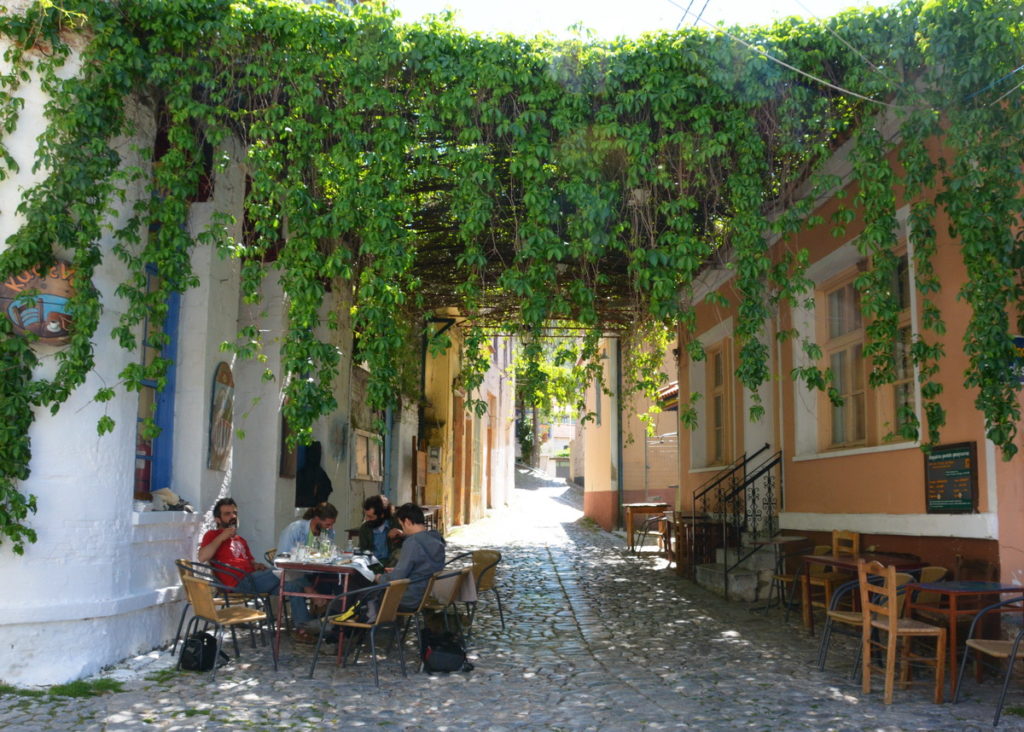
Although ouzo is produced in many regions in Greece, two islands stand out. Lesvos and Chios in the North Aegean both have strong ouzo cultures. These two islands produce many of Greece’s favorite brands. Distilleries are largely family operations, handed down through generations. One of the reasons these islands are particularly famous for their ouzo is the exceptional quality of the local anise – Lesvos, for example, has a famously aromatic anise from Lisvori.
Some Commonly Asked Questions about Ouzo:
What is the best Greek Ouzo? – This is a question of personal preference. Every ouzo is different – some lighter, some heavier, some more complex, and some more delicate. Some popular ouzo brands include Eva, Mini, Barbayianni, and Plomari – all from Lesvos. From Chios, you can try the delicate Apalarina (“Apalo” means gentle). Is Ouzo Good for your Stomach? – Yes. Or at least many people think so. Anise – the dominant aromatic – is considered a fine digestive.
How Strong is Ouzo? – The minimum alcohol content of Ouzo is 37.5%, and it can go as high as 50%. Some brands – like Barbayiannis – offer different levels of alcohol.
How Are You Supposed to Drink Ouzo? – This is a question that has a lot of answers, depending on who you ask. A few connoisseurs may sip it neat, but the aroma is intense. Most people prefer ouzo with water and over ice. However, in Lesvos, the locals never use ice – the opt instead for chilled water.
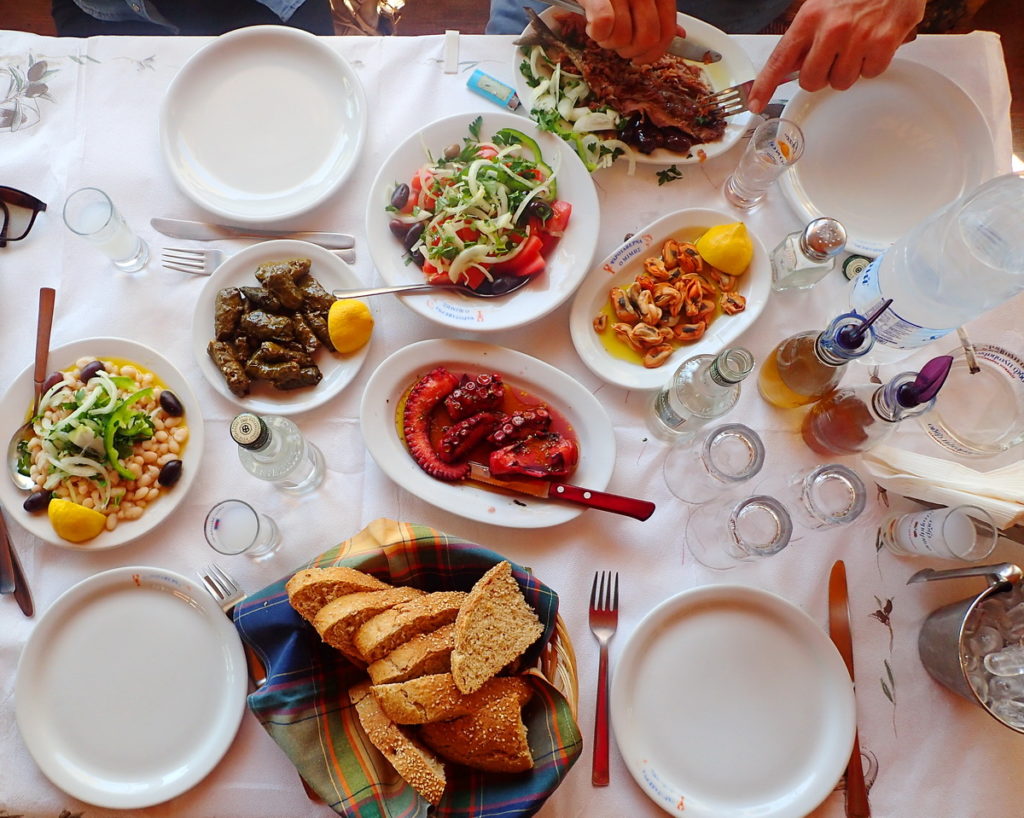
What is Good With Ouzo? – Ouzo is an intense drink that provides an excellent balance to bold flavors. The sweetness of the anise is a particularly good companion to salty flavors – cured and smoked fish and other sea foods especially.
Tsipouro

Tsipouro, the second of the three great Greek drinks, has some things in common with ouzo, and some things in common with tsikoudia. Like ouzo, it has an anise flavor – but only sometimes.
Tsipouro is a drink for a variety of occasions and a variety of tastes. The main types of Tsipouro are simply “με” (“me” with a short ‘e’) and “χορίς”. These mean, respectively, “with” and “without,” and they indicate whether you want your tsipouro brewed with aromatics – primarily anise, or without – to let the taste of the grape shine.
But is tsipouro with anise the same as ouzo? Decidedly not. Although there is that dominant and refreshing note of anise, and the fact that tsipouro with anise, too, will turn cloudy white over ice, these are not the same drinks. The major difference is that much ouzo is distilled with a neutral-tasting alcohol in order to give the distiller a neutral base for the aromatics. Tsipouro is always distilled from grapes, with all of their personality intact. The notes of grape interplay with the aromatics for a more complex drink with more intense flavors overall, aromatics included.
And it’s also often the strongest of the Greek drinks. Tsipouro is a high-octane alternative to Ouzo. It’s usually around 42% alcohol, and can get stronger from there.
Which one to drink? If you like grappa, then you’ll enjoy tsipouro with no added aromatics. The full personality of the grape comes through. It’is truly a “spirit” – the very essence of the grape. You can see this particularly well in some of the premium single grape variety tsipouros – a refined drinking experience that reveals the individual character of the grape.
How to Drink Tsipouro
If the tsipouro is without anise, it’s often drunk straight, but it’s also fine over ice. In fact it’s a good idea, especially if you’re new to the drink. Tsipouro with anise and other aromatics is like Ouzo, very often diluted with chilled water and enjoyed with ice.
Like all the great Greek drinks, tsipouro is social. And it’s always enjoyed with food. In fact, the charming port city of Volos has raised the drinking of tsipouro at a specialty “Tsipouradiko” to a cultural ritual – one of Greece’s most enjoyable authentic food and drink experiences.
Related Post: Tsipouro – The Traditional Greek Drink
Tsikoudia or Raki – The Drink of Crete
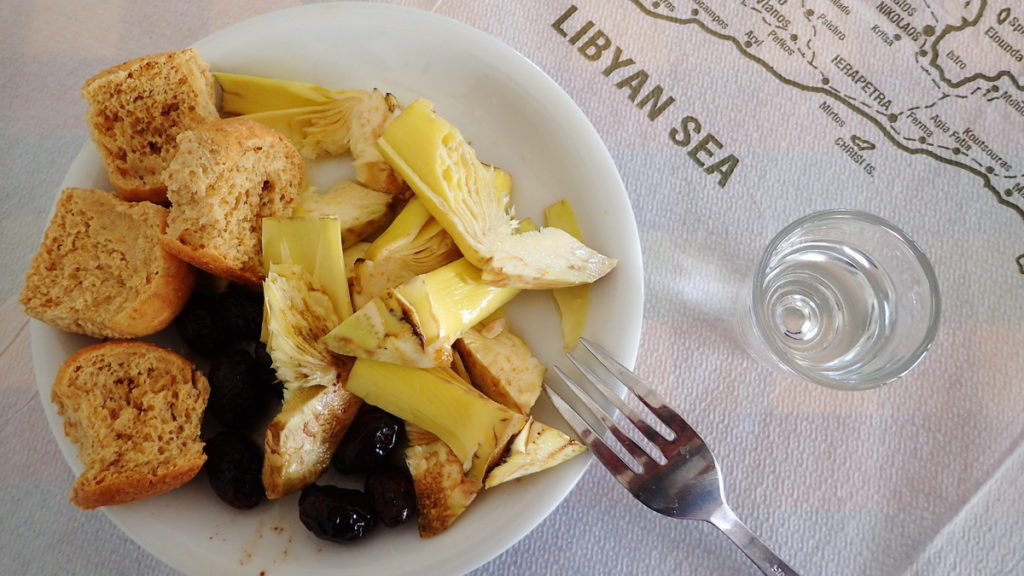
The Cretan grape distillate tsikoudia (also called raki) is pure and delicate. Although raki is legendary for its strength – especially for those new to the drink – it’s actually on the lighter end of the distillates spectrum. What’s the difference between tsikoudia and tsipouro without anise? Tsikoudia is generally lighter – around 36% alcohol vs. an average of 42% for tsipouro. This makes it both lighter on the system, and lighter on the palate. It’s the smoothest of the Greek drinks.
How is one distillate stronger than the other? To know the answer to that, you need to ask a distiller.
Fortunately, distillers are easy to meet in Greece. These two Greek drinks are often small-batch productions, just for family and friends. The alcohol content at the beginning of the distilling process is extremely high. This portion – the “proto-raki” (first raki) as it’s called in Crete – is collected and set aside for a number of medicinal uses. But it’s certainly not for drinking. The alcohol content drops as the distilling process continues. Therefore, it’s easy for the distiller to control the strenth of the distillate. Cretans like it a little softer and smoother.
And it’s a good thing they do, because tsikoudia is an intrinsic part of the Cretan experience, sipped at nearly any occasion, casual or formal. Raki or Tsicoudia is offered at any time of the day, in most any setting. In fact, we had tsikoudia in plastic cups while visiting a Ladies’ cookie-baking cooperative, at 11 am.
Raki vs. Tsikoudia – What’s the Difference?
The word “Tsicoudia” comes from the word “Tscoudi” – the word for the skins and seeds and pulp leftover from wine making from which the spirit is distilled. Raki is related to the same Turkish word. But Cretan raki and Turkish raki are two completely different things. Turkish raki is similar to Tsipouro with anise – a grape distillate with aromatics.
Cretan raki, on the other hand, is never flavored with added aromatics. The only fragrance coming from a shot of raki in Crete is the pure essence of the grape. Cretan raki has a pronounced terroir – a rich essence that suggests notes of soil, hay, and Cretan breezes.
How Do You Drink Raki or Tsicoudia in Crete?
Very carefully. A pure raki is one of the finest Greek drinks, so smooth and delicate you may not realize how strong it is until you rise from your chair. Raki or tsikoudia are almost always neat – no water or ice – in shot glasses. If you order it in a caffeneio or a taverna, you can get a carafe of either 100 or 200 ml.
Enjoy 100 ml per person in good conscience, as long as you drink it slowly, with plenty of water in between. And always, always have something to eat. Which you will, because Greeks never drink without eating, and especially not in Crete. At the very least there will be some peanuts salted in the shell, or some barley rusks (“paximadia”) and tiny olives with lemon (“tsakistes”), maybe a little graviera cheese. Proceed carefully, and you may find a night of tsikoudia has no consequences at all.
Related Post: Cretan Food Specialties – Staka, Raki, Snails, and More

